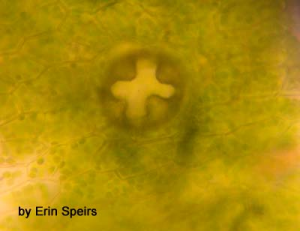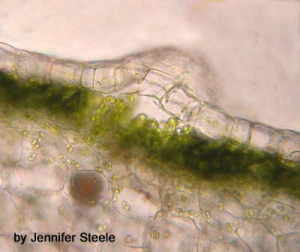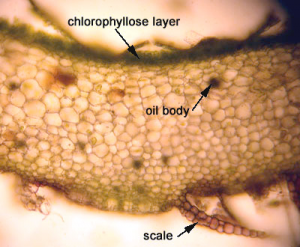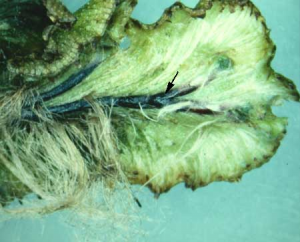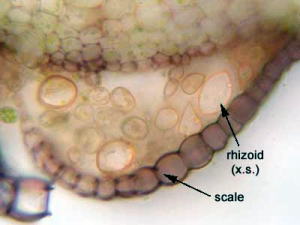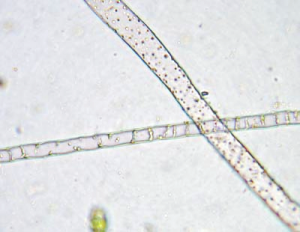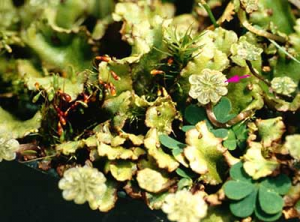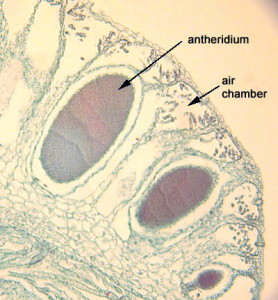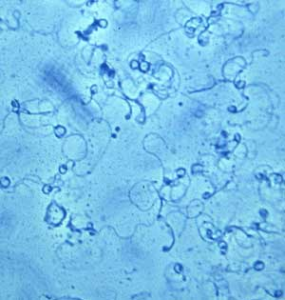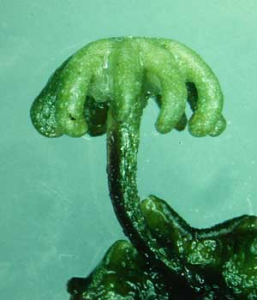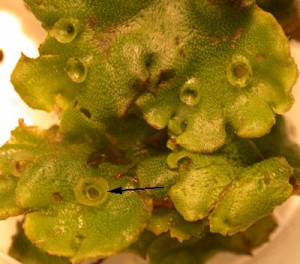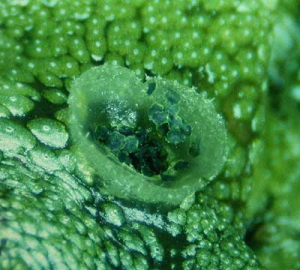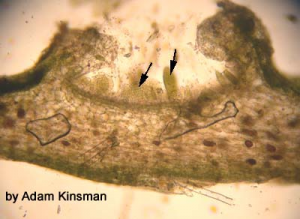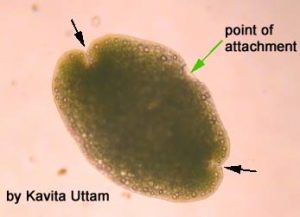Habitat
Marchantia polymorpha grows well in shaded and moist areas, such as greenhouses. Marchantia polymorpha can be found on the organic soil of disturbed areas (like those after forest fires) and ditches.
Gametophyte
Overall Structure:
Marchantia polymorpha has light green thalliod bodies firmly fixed to the substratum.
The thallus is irregularly branched.
Generally, there is a darkened band of cells along the central length of the thallus.
Thallus:
The thallus is usually flattened and has outlined air chambers with pores.
Pores are visible with the naked eye.
The barrel-like pores are complex.
The dorsal surface of the thallus has a chlorophyllose layer. Below the chlorophyllose layer are parenchymal cells occasionally having one complex oil body per cell.
Rhizoids:
Rhizoids and scales (indicated by the arrow) are located on the ventral side of the thallus. However, rhizoids are not present along the central line on the ventral surface.
When looking at a cross-section through the thallus, one can see rhizoids and scales.
There are two types of rhizoids, smooth and pegged.
Male Gametophyte:
An antheridiophore (indicated by the arrow), elevates antheridia above the primary thallus.
An antheridophore is a modified region of the thallus. It has a flat surface, where antheridial opening are located, to aid is sperm dispersal.
Each chamber on the upper surface of the antheridiophore, contains one enclosed antheridium. There are rhizoids and scales located on the ventral surface.
The antheridiophore also contains air chambers on the upper surface.
The sperm move via flagella.
Female Gametophyte:
The archegoniophore resembles the shape of an umberalla. Postioning of the archegonia is anacrogynous and they are enclosed.
Archegonia (A) are located on the lower surface of the archegoniophore. These archegonia contain zygotes.
Sporophyte
The sporophyte is located on the ventral surface of the archegoniophore. The sporangium is not lowered a great deal because it is already pointing down toward to thallus.
Mature sporophytes are composed of a foot, seta, unistratose sporangial wall, spores and elators.
Asexual Reproduction
Gemma cups are found on the dorsal surface of the thallus.
Gemmae, asexual diaspores, are located in gemma cups.
Here is a cross section through a gemma cup with the gemmae indicated.
A raindrop will hit gemmae in the gemma cup, and disperse them. Individual gemmae have a point of attachment (point where it was connected to the cup) and two nodules (where a new gametophytic generation will propagate).



